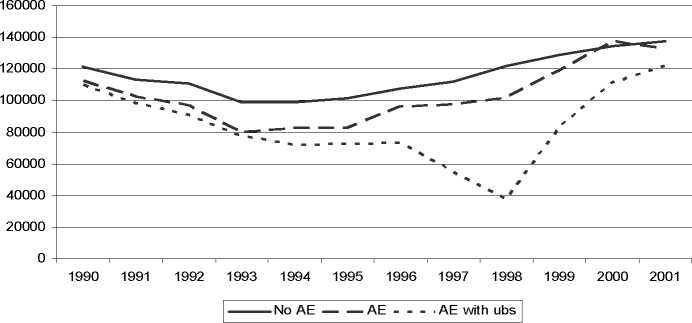Figure 4 Females with two-year upper secondary school; wage earnings 1990-
2001, AE sample registered from the autumn of 1997 and not later than the
spring of 1999.

Note: Number of observations in AE are 134 with no UBS and 412 with UBS. Annual wage
earnings expressed in SEK 2001 values.
The analysis can be reproduced for the other educational groups, but the num-
bers are then only around 50 in each subgroup of AE participants. Neverthe-
less, the post-AE increase is clearly detected, although without attaining the
level of the non-participants and also with smaller differences between the
groups with and without UBS. If the above exercise were also to be done for
those who enrolled in the autumn semester of 1996, when government funding
of seats at komvux for the unemployed was about half the amount it became in
1997, the wage earnings trajectories of AE participants resemble a compromise
of the trajectories of AE participants with and without UBS above.
4.2 Individuals in higher education
This section describes data on the part of the sample that at some point between
1988 and 2000 were registered in higher education. Of the original sample (the
one displayed in Table 1) this concerns some 36 per cent, but among AE
participants the fraction enrolled in higher education before 2001 was 43.7 per
cent. Three aspects of AE participants and non-participants will be addressed.
The first is to describe the fractions of different groups to enrol in higher edu-
cation and, given registration in higher education, to discern whether a prior
IFAU - Does adult education at upper secondary level influence annual wage earnings?
19
More intriguing information
1. A Rational Analysis of Alternating Search and Reflection Strategies in Problem Solving2. The name is absent
3. Towards Learning Affective Body Gesture
4. The name is absent
5. CURRENT CHALLENGES FOR AGRICULTURAL POLICY
6. How do investors' expectations drive asset prices?
7. The name is absent
8. Impacts of Tourism and Fiscal Expenditure on Remote Islands in Japan: A Panel Data Analysis
9. The name is absent
10. The name is absent